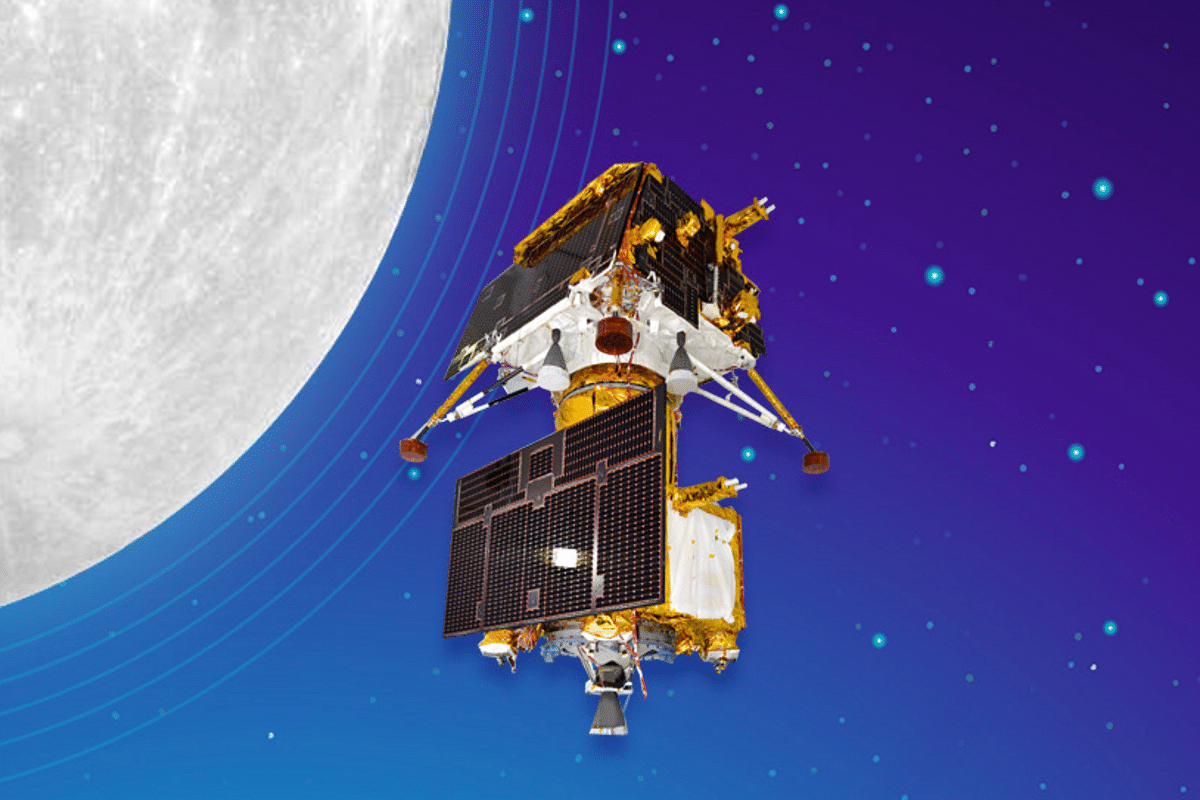Science
Chandrayaan-3 Is Now Close To The Moon. Here's What Will Happen In The Next 24 Hours
- The Chandrayaan-3 propulsion module, launched atop ISRO's LVM-3 rocket, has neared the Moon and will undergo complex maneuvers over the next 24 hours to achieve Lunar Orbit Insertion.

The Chandrayaan-3 propulsion module. (ISRO)
Nearly 22 days after it was launched atop ISRO's LVM-3 rocket and put into an elliptical orbit around the Earth, the Chandrayaan-3 propulsion module has reached close to the Moon. Over the next 24 hours, a set of complex maneuvers performed by the Telemetry, Tracking, and Command Network in Bengaluru will ensure that the module is pulled into the Moon's gravitational sphere in a process called Lunar Orbit Insertion.
The Journey So Far
In the weeks after the module was placed in an initial Earth orbit on 14 July, ISRO has performed a series of maneuvers at specific times to transfer the spacecraft to a trajectory that intersects with the Moon's orbit.
While orbiting the Earth in an elliptical orbit, the module was at its highest speed when it passed through the point in that orbit closest to the planet. This point is called the perigee. The other end of the orbit, where the module will be the furthest from the Earth and at its slowest speed, is the apogee. The speed varies across different points in the orbit due to the variation in the Earth’s gravitational pull.
The closer the module is to the Earth, the stronger the gravitational pull, and the greater the speed of the spacecraft.
When the module reached the perigee, or the point of highest speed, the onboard engine were fired by ISRO, which increased its speed even more, pushing it into a higher, more elongated orbit as a result.
With every burn, the module kept spiralling outwards in increasingly elongated ellipses, as depicted by ISRO in the sketch below.
A total of five such maneuvers were performed over two weeks. Eventually, with the last burn of the onboard prouplsion system, the module reached the escape velocity necessary to break free from Earth's gravity.
At this point, the propulsion module's orbit around the Earth had elongated enough to allow it to set a course towards the moon - completing a process that is called Translunar injection (TLI).
With TLI completed, the module embarked on its journey towards the Moon along a path known as Lunar Transfer Trajectory.
On 4 August, ISRO reported that the module had covered two-thirds of its journey towards the cratered sphere.
What Happens Next
The next step in the module's journey to the moon is Lunar Orbit Insertion.
The entry of the Chandrayaan-3 module into the LTT is carefully timed to align with the moon's position in its own orbit.
This strategic timing ensures that the module reaches proximity to the moon's orbit precisely when the moon is located in that region.
Once the module reaches this point, a precise maneuver is executed using the onboard propulsion system. This maneuver, known as lunar orbit insertion, is designed to reduce the module's velocity.
During the lunar orbit insertion (LOI) maneuver, the spacecraft's engine is fired in a way that acts like a powerful brake. The onboard propulsion system will be fired in the direction opposite to its current motion. This firing generates thrust, which acts as a braking force. By firing the engine in this way, the spacecraft's speed is reduced, causing it to slow down.
Scheduled to take place on the 5 August, at approximately 7 pm Indian Standard Time, the upcoming Lunar Orbit Injection maneuver represents a pivotal moment in Chandrayaan-3's expedition, as it inches closer to the Moon, reaching a crucial phase in its journey.
As the maneuver is performed, the gravitational field of the Moon starts to exert its influence on the module, gradually pulling it into a stable lunar orbit. This process involves a delicate balance between the module's velocity, the Moon's gravitational pull, and the direction of the thrust.
Having escaped Earth’s gravity and entered lunar orbit, the module will start revolving around the moon in an elliptical orbit.
A successful lunar insertion will complete the crucial phase of placing the propulsion module in orbit around the moon.
Over the next few weeks, a series of maneuvers will be used to progressively lower the altitude of the module and place it in a 100 km circular orbit around the moon. It is at this point that the propulsion module will separate from the lander, which will continue its journey towards the lunar surface.
If all proceeds as planned, sometime around 23 August, Chandrayaan-3 will accomplish a groundbreaking feat as the first mission ever to successfully soft-land in the vicinity of the lunar south pole.
Support Swarajya's 50 Ground Reports Project & Sponsor A Story
Every general election Swarajya does a 50 ground reports project.
Aimed only at serious readers and those who appreciate the nuances of political undercurrents, the project provides a sense of India's electoral landscape. As you know, these reports are produced after considerable investment of travel, time and effort on the ground.
This time too we've kicked off the project in style and have covered over 30 constituencies already. If you're someone who appreciates such work and have enjoyed our coverage please consider sponsoring a ground report for just Rs 2999 to Rs 19,999 - it goes a long way in helping us produce more quality reportage.
You can also back this project by becoming a subscriber for as little as Rs 999 - so do click on this links and choose a plan that suits you and back us.
Click below to contribute.
Latest